With a legacy spanning centuries, Japanese swords stand as enduring symbols of tradition, craftsmanship, and cultural identity. Revered for their exquisite beauty, unparalleled sharpness, and spiritual significance, these blades have captivated hearts and minds around the world, weaving tales of honour, loyalty and resilience.
Rooted in the ancient art of sword making, Japanese swords, or “nihonto,” have evolved through the ages, reflecting the dynamic history and cultural landscape of Japan. Forged in the fires of swordsmith villages and towns across Japan, each of these legendary blades tell a story of craftsmanship and dedication, passed down from generation to generation.
Let’s start our fascinating journey into Japanese swords by exploring the main types you should know, discover how they are made, and uncover the rich history of the five renowned sword schools of Japan. Our focus will then shift to Seki city, an integral part of the esteemed Mino School, where you can visit museums with Japanese swords, see how they are made, and try some hands-on sword related experiences.
Five Types of Japanese swords
There are several types of Japanese swords of which the Katana stands out as the most renowned and widely recognised. We’ll go through the main types of modern age Japanese swords in this section and cover which two were paired and frequently wielded alongside the Katana.
Katana Sword
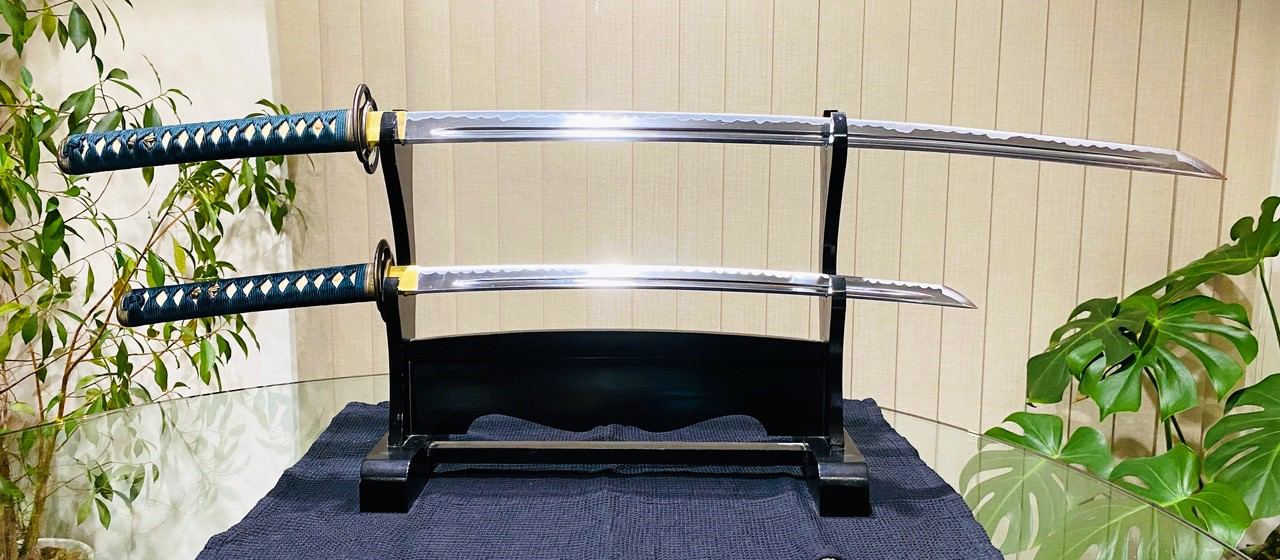
In today’s popular culture, the Katana embodies the essence of Japanese swords, captivating audiences across various forms of media. From iconic films like Kill Bill to captivating anime series like Demon Slayer, the Katana has seamlessly woven its way into our collective imaginations. With its enduring popularity, it comes as no surprise that there are even video games named after this legendary weapon such as Katana Zero.
But what exactly is a Katana sword and how did it become renowned as the weapon of choice for the samurai? Its distinctive features include a slender, curved blade, measuring between 60cm to 80cm in length. The hand guard, available in either square or round shape, is paired with a generously proportioned handle that accommodates both hands. In response to the changing dynamics of the battlefield during the Muromachi period (1336 – 1573), the Katana emerged as an answer to the demand for increased agility and swiftness. Notably, this remarkable weapon was traditionally worn with the edge facing upwards, allowing its wielder to draw the blade effortlessly and strike their adversaries with an unmatched fluidity.
Wakizashi Sword
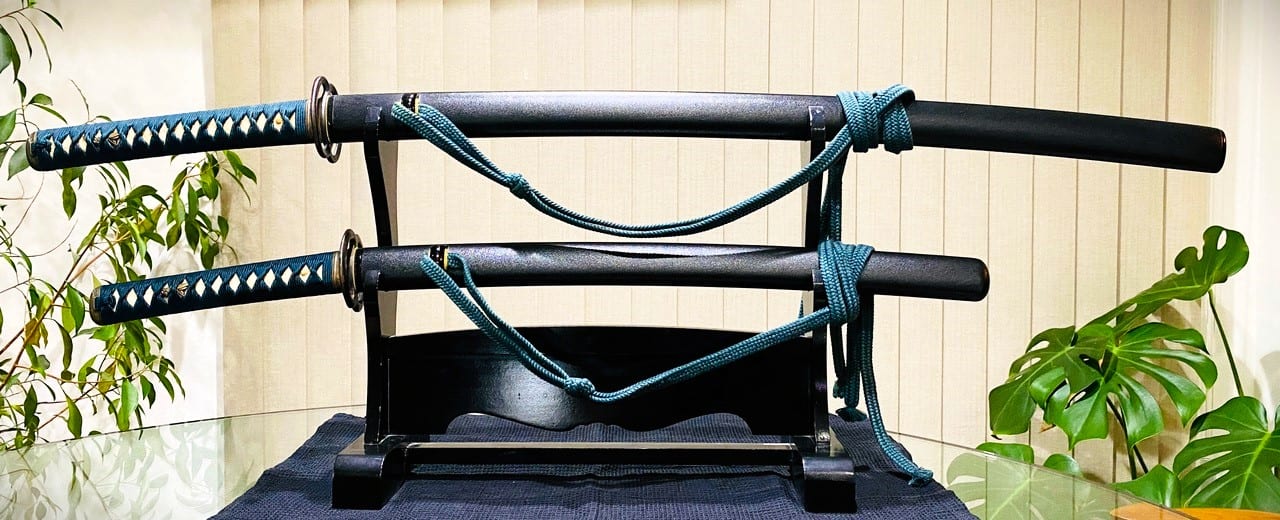
A secondary sword carried by the Samurai was the Wakizashi. Compared to a Katana, the Wakizashi has a shorter blade, typically measuring between 30 and 60 centimeters. Samurai warriors, known for their mastery of the sword, would often wear both the Katana and Wakizashi in a symbolic pairing called the Daisho, meaning “big-little.” The Katana would be referred to as the long sword or killing sword, while the Wakizashi would be considered the faithful companion sword.
While primarily used as a backup weapon, skilled Samurai warriors were known to wield the Wakizashi in their off-hand along with the Katana. Additionally, the sword had a unique purpose in certain situations – it was employed for the act of ritual suicide, known as Seppuku, earning it the title of the ‘Honour Blade’.
Upon entering a structure or dwelling, the Samurai were customarily obliged to relinquish their Katana at the gateway. However, the Wakizashi, unlike its longer counterpart, was permitted to remain by their side at all times. This smaller sword proved particularly advantageous in combat situations within restricted confines, owing to its shorter length.
Tanto Sword
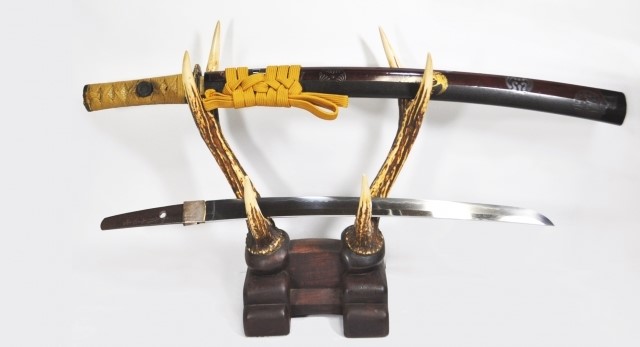
The Tanto is a type of dagger or short sword that possesses a blade that can be either single or double-edged, with a length ranging between 15 and 30cm. Its striking feature is its relatively shorter stature when compared to other traditional Japanese swords. The Tanto’s historical purpose was to serve as a close-quarters stabbing weapon, ideal for combat scenarios where longer swords would prove unwieldy. Additionally, the Tanto was the other sword that could be paired with the Katana as the Daisho set.
The beauty of the Tanto lies in its diverse designs, some possessing an elegant curvature while others boasting a straight and simple blade, and its hilt, known as the Tsuka, is usually crafted to accommodate a one-handed grip. Beyond its utilitarian origins, the Tanto occupied a ceremonial role and served as a symbol of status, and to this day is still used by Sumo referees who carry a Tanto tucked into their Obi belt during Sumo bouts.
Tachi Sword
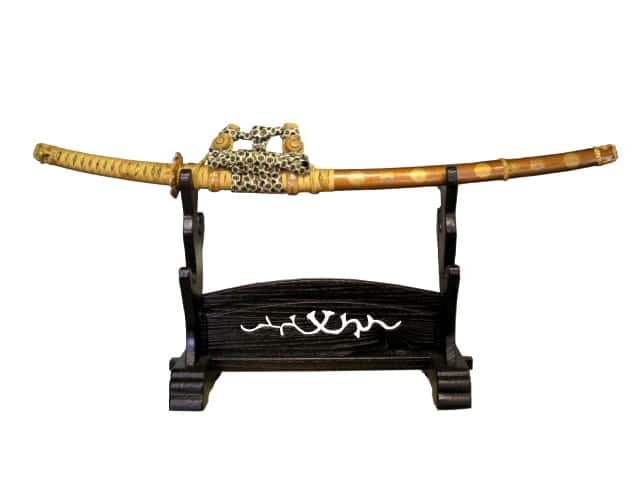
Predating the well-known Katana, the Tachi sword held a significant role in the early medieval period of Japan. Designed for both samurai warriors on horseback and in the battlefield, it featured a longer and more pronounced curvature than its successor. The way that the blade of the Katana faced upwards when sheathed and worn, while the blade of the Tachi sword faced down, is what distinguishes the Tachi from its successor, the Katana.
As time shifted and the samurai adapted to more ground-based battles, the Katana began to supplant the Tachi as the weapon of choice. Its ease of draw and effectiveness in close combat made it a more practical option. Nevertheless, Tachi swords continue to hold immense value as historical artifacts, forever serving as powerful symbols of Japan’s martial heritage.
Ninja Sword
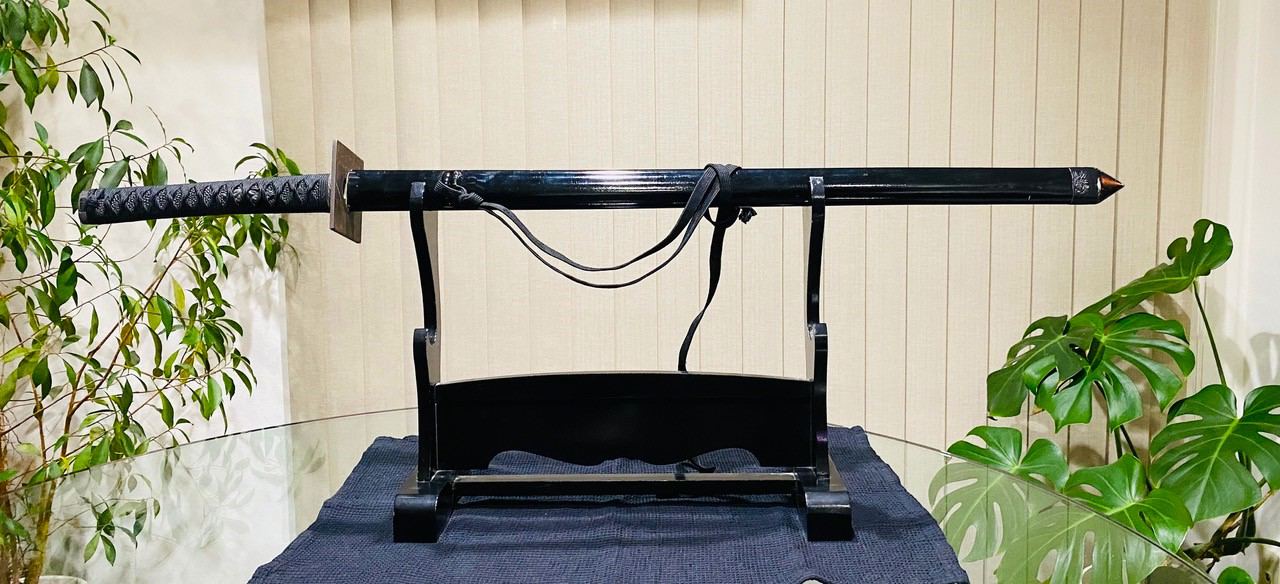
During the feudal era of Japan and lasting up to the Meiji restoration (1868 – 1889), there existed a group of covert agents known as the Ninja or Shinobi, who were masters of espionage. It is widely believed that they carried a sword, called the Ninjato or Shinobigatana, which featured a straight blade that typically measured less than 60 cm in length. However, given that Ninja primarily acted as intelligence gatherers rather than assassins, it is highly doubtful that the Ninja sword was used in actual combat scenarios.
If we consider two aspects of the Ninja sword, we can see why this would be true. First, if Ninjas carried or even requested Swordsmiths to create a distinctly straight sword for them, it would immediately give away their identity. In addition, with the Ninja sword securely tucked away on their back, extracting the weapon and swiftly extending it upwards out of its sheath for combat would demand significant exertion and take up precious milliseconds, posing a serious challenge during moments of imminent danger.
Ninjas have of course become woven into many legends and stories since the Edo period (1603 – 1868), and their iconic swords continue to captivate the imaginations of people all over the world. For this reason the Shinobigatana will likely live on as a symbol of their identity and skill in covert techniques and unconventional warfare.
How Japanese swords are made

Crafting Japanese swords, like the renowned Katana, is an intricate art that demands expertise and attention to detail. Over countless generations, Japanese swordsmiths have perfected the techniques required to fashion exceptional blades, employing a careful sequence of steps. During the sword making process, meticulous selection of the blade’s prime materials is critical, specifically that of Tamahagane, a precious high-carbon steel derived from the time-honored smelting of iron sand.
The first step in the creation of Japanese swords involves the smelting of Tamahagane in a clay furnace known as a Tatara. This requires careful control of temperature and carbon content to achieve the desired quality. Once the Tamahagane is smelted, it is forged into a rectangular block, then folded back up to around 15 times and hammered to remove impurities and strengthens the steel. Through this folding process, over 100,000 layers of metal will be created.
After the Tamahagane has been refined, the Swordsmith places a softer iron metal inside and works on joining the pieces, before beginning to shaping the blade through a process called “Forging.” Using a combination of heat and hammering, the smith carefully shapes the steel into the desired curvature and profile of the sword. Throughout the forging process, the blade is repeatedly heated and cooled to precise temperatures to achieve optimal hardness and flexibility.
Once the forging is complete, the blade is carefully polished to fully reveal its characteristic Hamon, or temper line, which is formed during the differential hardening process. Finally, an engraved signature is placed on the tang, which is hidden once the blade is fitted with a handle and finishing touches are made.
The 5 most famous Japanese sword schools
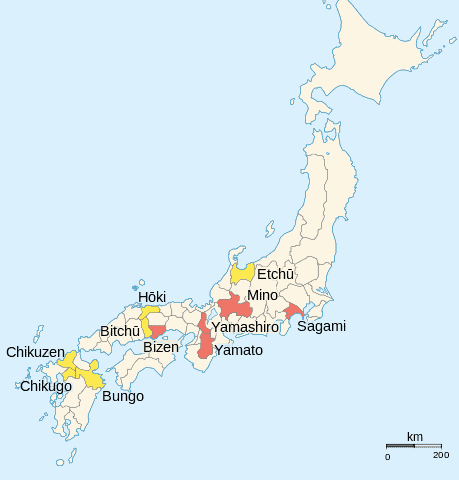
The five main Japanese schools for making swords, known as “Gokaden,” each developed distinct techniques and styles of Swordsmithing over centuries. These five schools are:
- Yamato (Nara Prefecture) – known for producing blades with a gentle curvature, graceful lines, and intricate Hamon patterns
- Bizen (Okayama Prefecture) – renowned for their rugged and robust construction, and characterised by a distinctive temper line
- Soshu / Sagami (Kanagawa Prefecture) – famed for its innovative techniques resulting in blades of exceptional beauty and cutting performance
- Yamashiro (Kyoto Prefecture)- prized for their elegant and refined appearance, featuring subtle curvature and graceful lines
- Mino (Gifu Prefecture) – which produced swords with a practical design, favoured by warriors for their durability and cutting ability
Established as the final of the five schools, the Mino tradition in modern day Gifu Prefecture holds a significant position in the history of Japanese sword making. Originating in the Kamakura period (1185 – 1333) under the guidance of a skilled Swordsmith from the Yamato school, the Mino school eventually surpassed the Bizen school in sword production following a devastating flood. Its strategic positioning between the Kanto and Kansai regions allowed the Mino smiths to supply powerful regional warlords and establish their dominance. They then traveled across Japan, imparting their methodology and influencing the newer Shinto schools to exhibit distinct Mino characteristics during the Edo period (1603 – 1868).
Seki Swordsmiths & Nokaji
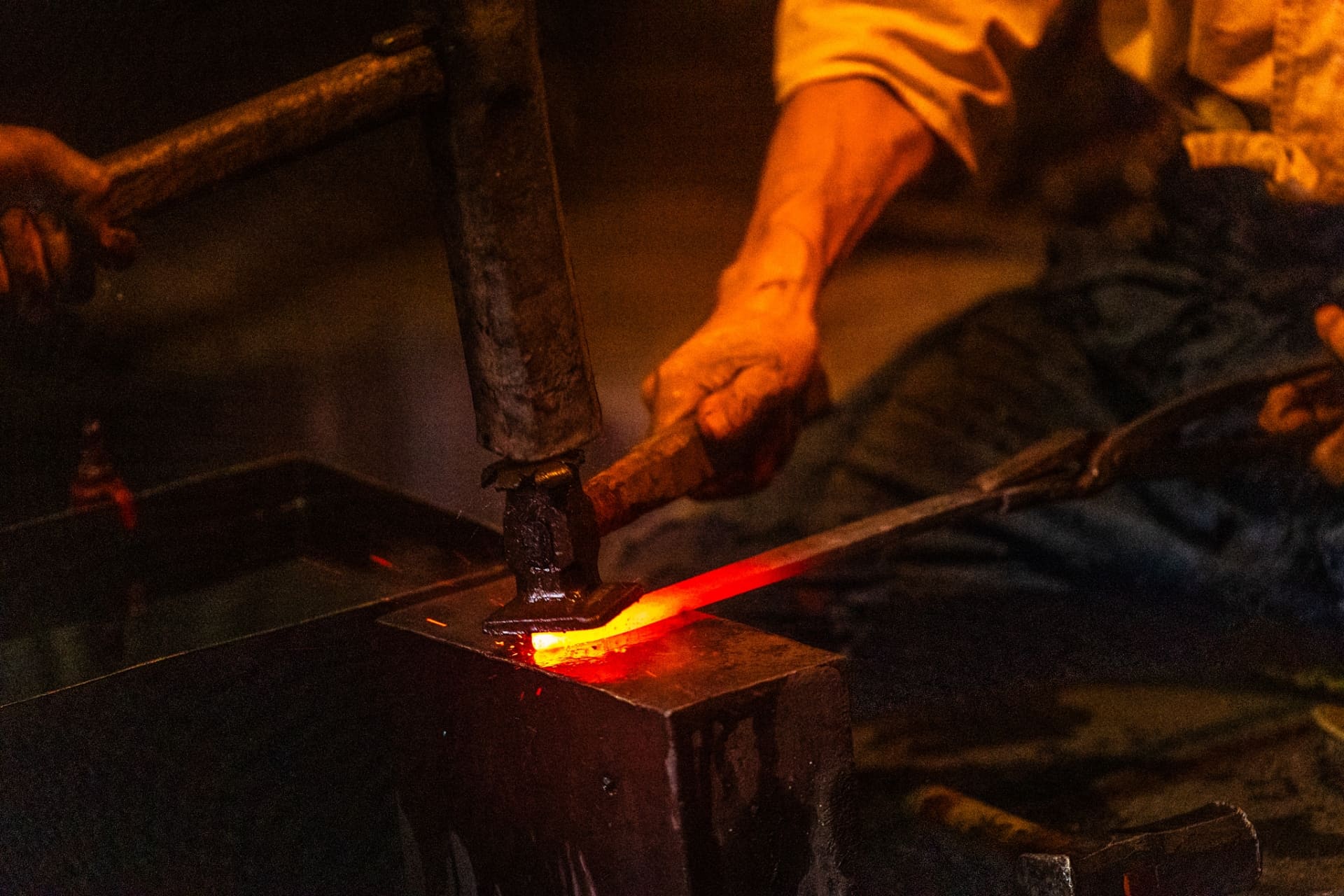
During the height of the Mino school, Seki in former Mino province, thrived as a town with over 300 swordsmiths honing their craft with passion and precision. Alongside the revered art of sword making, Seki also boasted a remarkable community of blacksmiths known as Nokaji, who created essential tools for everyday life such as kitchen knives, razors, and farming tools. As the demand for Japanese swords waned in the peaceful Edo period (1603 – 1868), many of Seki’s esteemed Swordsmiths transitioned into Nokaji to sustain their livelihoods. Following the government ban on swords in the Meiji era (1868 – 1912) from the mid-nineteenth century, the remaining Swordsmiths were either forced to turn to knife making or exporting military swords.
In the modern era, the knowledge and expertise of both Swordsmiths and Nokaji passed down through countless generations continue to shape the production of cutlery that is held in high regard by people all across the globe. When it comes to the world of cutlery manufacturing, Seki stands tall as one of the top three destinations globally, together with Sheffield in the UK, and Solingen in Germany.
Why visit Seki?
If you are planning a trip to Japan and have a deep interest in the rich heritage of Samurai sword culture and Japanese blade craftsmanship, be sure to add a visit to Seki to your list. Located in the heart of Central Japan, Seki is renowned for its Japanese kitchen knives as well. Alongside the captivating museums dedicated to ancient Japanese swords, Seki offers immersive experiences with skilled Swordsmiths and a unique opportunity to acquire the most exquisite Japanese knives.
Within the next two sections, we will present you with museums, recommended stores to purchase knives, and sword-related experiences during your exploration of Seki.
Visiting Sword Museums & Buying Cutlery in Seki

At the Seki Hamono Museum located within the Cutler Sanshu building complex, visitors can immerse themselves in the centuries-old tradition of Japanese blade craftsmanship. Upon entering the museum, guests are greeted with a vast array of meticulously crafted knives, swords, and cutting tools, each telling a story of skill and heritage. Engaging exhibits provide insights into the history and techniques of blade making, from the forging of steel to the delicate art of sharpening. On certain days, visitors can also witness impressive demonstrations by master craftsmen, gaining firsthand knowledge of the precision and dedication required in this ancient craft.
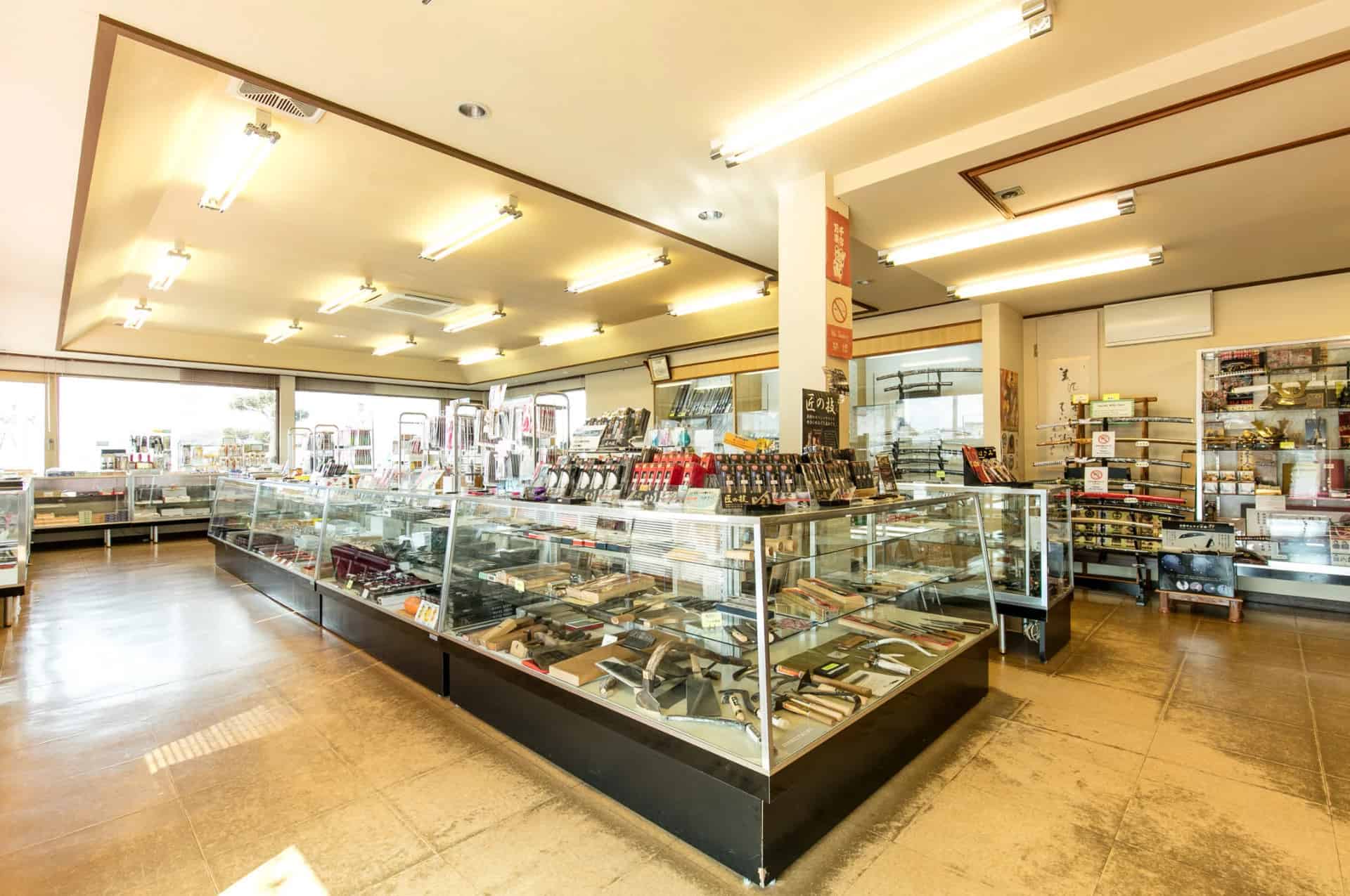
While at the Cutler SANSHU Seki Hamono Museum complex, be sure to spend time at the Cutler Sanshu store. Under the guidance of the third-generation owner, Cutler Sanshu continues to create exquisite knives commissioning a select group of local blacksmiths to forge the blades. These kitchen knives embody the very essence of samurai swords – a blend of sharpness, precision, and durability. Prized by professional chefs throughout Japan, Cutler Sanshu’s Seki Yoshihide brand knives and scissors can be found in their store, alongside a vast range of cutlery sourced from local manufacturers which are available for direct purchase.
Another sword museum in Seki is the Seki Traditional Swordsmith Museum which pays tribute to the skills of Seki Blacksmiths and traces their roots back to the Kamakura Period (1185 – 1333). Step inside and journey through time as you explore an outstanding collection of swords on display and you can admire the handiwork of legendary Japanese swordsmiths such as Kanemoto and Kanesada, and learn more on the choice of materials and the steps involved in the manufacturing process.
Just a few blocks away from the Seki Traditional Swordsmith Museum is the Gifu Cutlery Hall showcasing a wide collection of Seki cutlery products, ranging from scissors and kitchen knives to nail clippers and imitation swords. Offering a direct purchase option from the manufacturers themselves, customers can expect good quality products at reasonable prices.
Japanese Sword Experiences

In Seki and the neighbouring city of Minokamo, there are several opportunities to immerse yourself in the world of Japanese swords and knives, including engaging hands-on activities. Should this be something that appeals to you, remember that it is crucial to make reservations well ahead of time and be aware that certain experiences may mandate a minimum participation of two people. Here are 4 experiences that are likely to pique your interest.
- Japanese Sword Forging Experience at Seki Hamono Museum. With this experience, you can observe a Japanese sword forging demonstration by the 25th and 26th generations of the revered Kanefusa Fujiwara swordsmith lineage. These distinguished craftsmen created swords for the legendary Tokugawa family for generations, and offer an unrivaled glimpse into the world of sword making. Visitors also have the chance to hear from the swordsmiths about the intricate processes involved in the crafting of Japanese swords.
- Iaigiri Swordsmanship Demonstration at Seki Hamono Museum. In a captivating display, spectators can witness the remarkable precision and power of Seki swords. These legendary weapons, favoured by warlords during the tumultuous Sengoku period (1467 – 1573), are brought to life in a breathtaking demonstration. From the moment the performer unveils the sword, a seamless motion splits the bamboo in half. The masterful swordsmanship and unparalleled sharpness of the blade combine to create an awe-inspiring experience that will undoubtedly leave a lasting impact.
- Small Sword Forging Experience with Attractive Japan. Your teacher for the 4 hour experience will be second generation master swordsmith Kanemasa Ohno, who will explain the historical significance and philosophical underpinnings of Japanese swordmaking before giving a demonstration of the processes you’ll be using. Then, it’ll be time to channel your inner craftsman as you delve into the hands-on experience of hammering and forging iron. Step by step, you will forge your own blade, and finally mark it with your own name.
- Original Paper Knife Making Experience at Seki Hamono Museum. Make your own paper cutting knife by processing a 5-inch nail, using a technique directly passed down from the Kanefusa Fujiwara swordsmiths. Best of all, unlike some other crafts, you can take the paper knives home with you on the same day. Please note this experience is only available for adults or children aged 9 years and over.
Seki Cutlery Festival
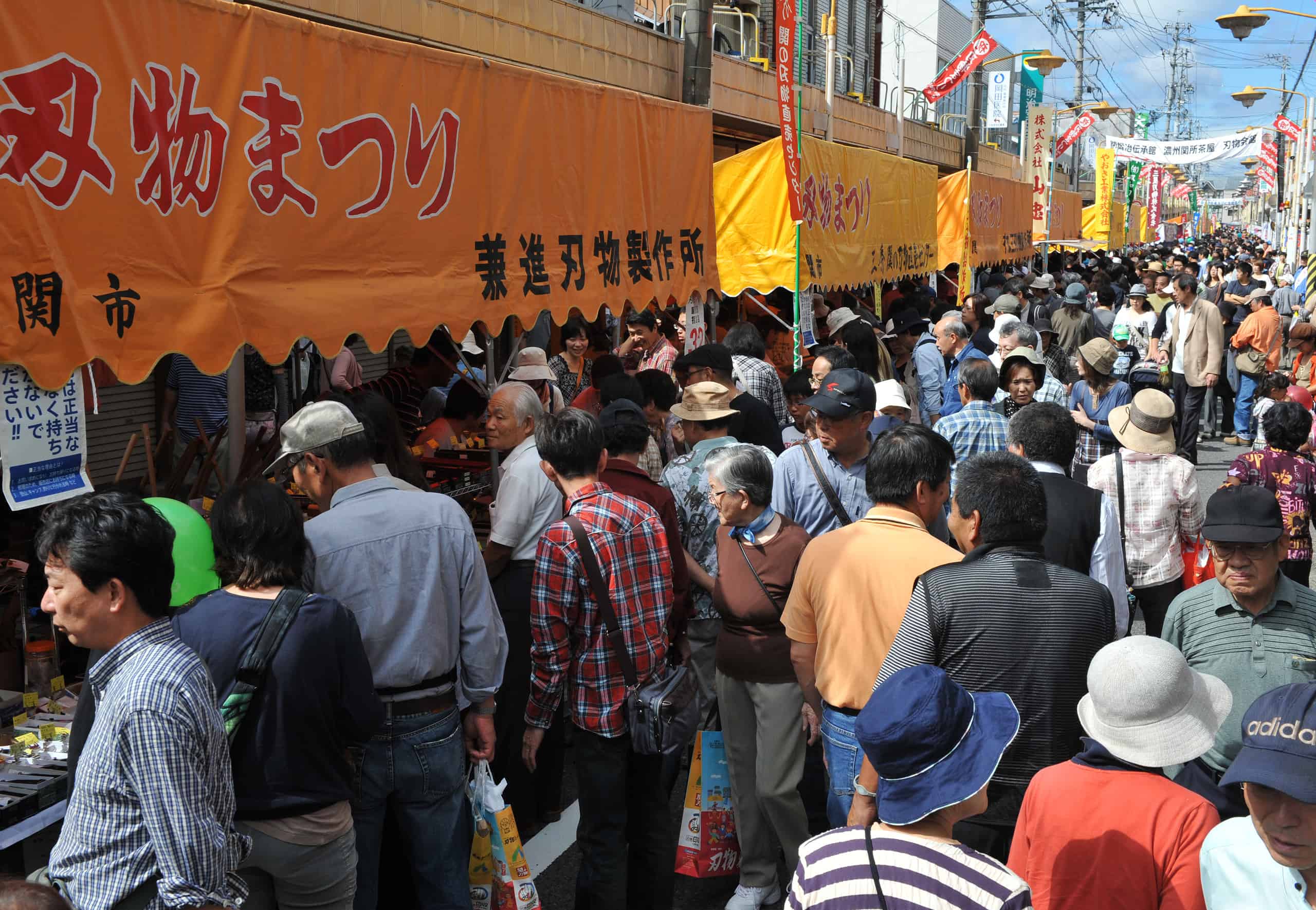
Every year in October, the city of Seki hosts the Seki Hamono Matsuri (website in Japanese) which is the biggest knife and cutlery event in Japan. This festival is a celebration of the city’s rich blade-production culture and attracts large crowds of visitors from all corners of Japan and even professional chefs from overseas! Along the main city road, a bustling marketplace comes to life with around 50 different producers setting up their tents selling a range of products from kitchen knives to scissors. The best part? All of these items are available at incredibly affordable prices.
Throughout the festival, there will be events taking place with opportunities to watch masters honing their sword skills. On top of this, there will be spectacular demonstrations of traditional Japanese sword forging where sparks fly and craftsmanship put on display.
Concluding our exploration of Japanese swords, we trust that this piece has offered you valuable knowledge regarding the main types of Japanese swords, their craftsmanship, and the legendary Japanese sword schools. If your future adventures lead you to Japan, we anticipate that our suggestions for fully immersing yourself in the captivating universe of Japanese swords in Central Japan shall prove to be a useful resource.
At this stage, we’d like to express our gratitude to Chris Glenn for his invaluable advice and review of this article. In Japan, Chris is widely recognised for his research and knowledge on Japanese Samurai History, Samurai Swords and Armour, and Japanese Castles. For those eager to delve deeper into Japanese history and the Samurai world, we encourage you to visit his Facebook page – Samurai History & Culture which is regularly updated.
If you have any questions or comments, please feel free to add them in the comments section below. For those looking for other exciting destinations to explore in Japan, we recommend checking our travel page, and for those wishing to delve deeper into the rich culture and history of Japan’s Chubu region, feel free to explore our articles on Japanese Pottery. Alternatively, if you are in search of accommodations in Nagoya, which is a convenient location close to Seki city we have curated a list of highly recommended hotels for your convenience.


